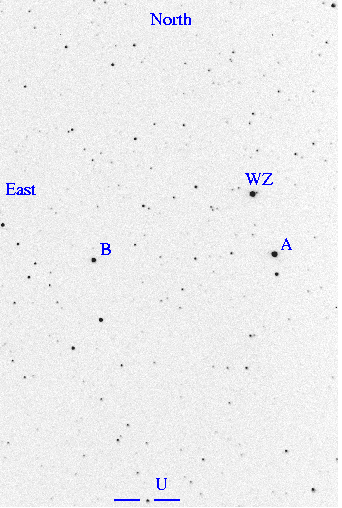
On the night of August 16, 2001 UT, Michael Richmond and Stacey Davis used the RIT Observatory's 10-inch Meade LX200 telescope to monitor WZ Sge. All exposures were taken without the focal reducer, through a V-band filter, onto an SBIG ST-8 CCD camera. Each exposure was 10 seconds long. Due to the design of the SBIG software, the time of each exposure is accurate only to +/- 1 second. The field of view was about 17 by 12 arcminutes; a typical example is shown below:

We subtracted dark current from the images and divided by a median twilight sky flatfield. We ran software to detect all stars more than 4 sigma above the sky, then measured the light from each star within a circular aperture of radius 8.8 arcseconds.
The night was mediocre -- high clouds arrived soon after sunset, and they very slowly grew thicker and thicker. We gave up around 1:30 AM local time, when only first magnitude stars could be seen with the naked eye. The interval spent observing the field of WZ Sge was JD *2137.60 to *2136.73.
We gathered 455 images of the field, but discarded a few due to problems of one sort or another. We fed all raw instrumental magnitudes of 96 stars on 455 images into a program which implemented Honeycutt's inhomogeneous ensemble photometry technique. The solution gave most weight to the bright stars "A" and "B" (marked above). The standard deviation from the mean magnitudes in the solution are shown below, as a function of differential magnitude.
See the note below on the points marked "Z" and "X" on the graph above.
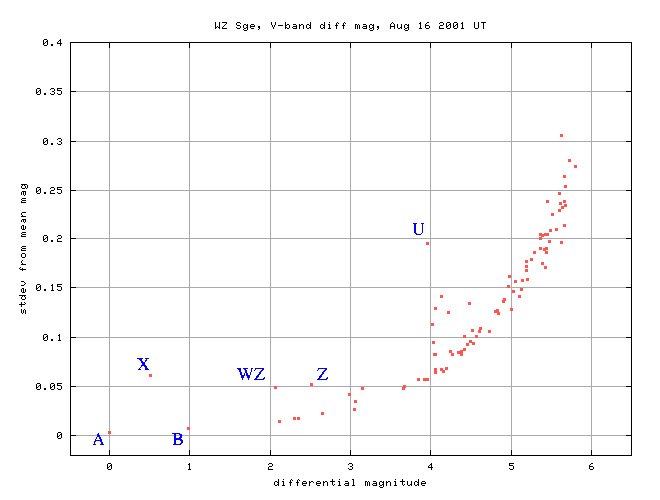
The solution placed the mean magnitude of stars "A" = GSC 1612.1830 = HD 191083 and "B" = HD 351517 as follows:
star mean stdev
A 0.0 0.003
B 0.984 0.007
We used star "B" as a check star to detect errors due to clouds or poor images (which clearly were present in the entire night's run). We discarded any image in which star "B" differed from its mean magnitude by more than +/- 3 times its standard deviation.
The final result is 436 measurements of WZ Sge over a span of about 3.1 hours. Here is the light curve:
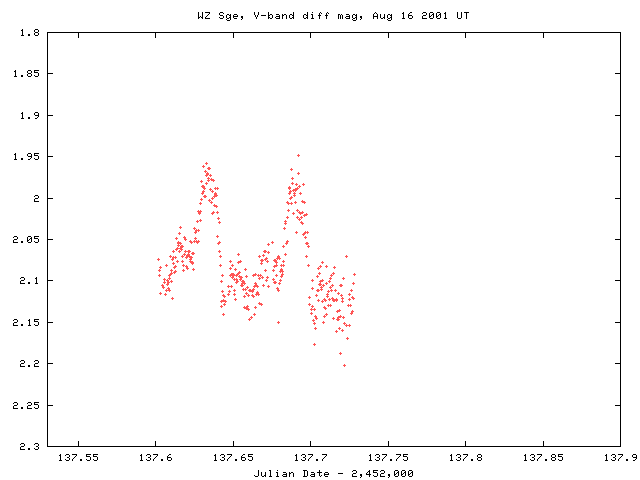
You can download an ASCII text file with the measurements:
The file has some comments at the top, followed by data lines with 4 numbers per line, like this:
Jul_27.06510 2117.56510 2117.56977 0.046
The columns are:
Tricky apparent variables due to periodic error in worm gear?
Note stars with larger-than-expected stdev in the graph of stdev vs. mag above. "WZ" is WZ Sge, and "U" is an eclipsing binary I found in earlier observing runs. The points marked "X" and "Z" are stars which appear in the very corners of the field, and (I suspect) appear to vary as a result of the period error in the telescope's worm gear: it moves them enough over a period of about 8 minutes to cause errors of about +/- 0.10 mag in aperture photometry.
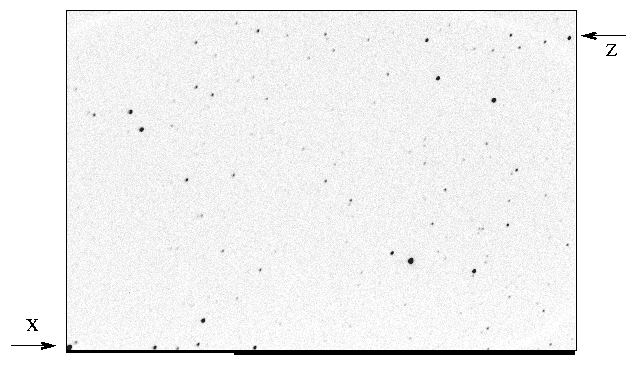
Take a look at this chart, which shows instrumental magnitude versus time. Star "X" is the blue squares between mag 0 and 1, and star "Z" is the orange crosses between mag 2 and 3.
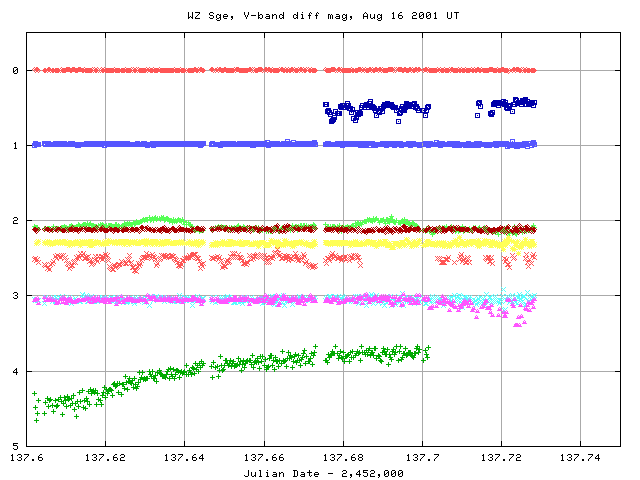
I'll check to verify that these two stars really are constant in future observing runs.
Last modified 8/22/2001 by MWR.